Historic Holly Bough saved for posterity
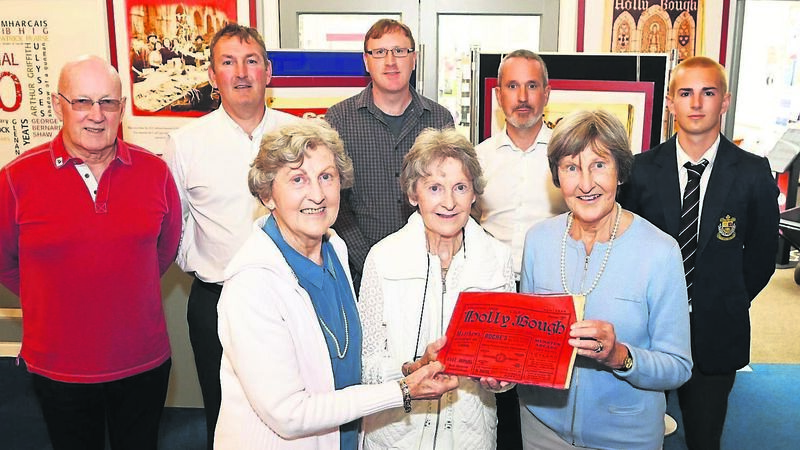
Sisters, from left, Catherine MacHale, of Rochestown, Felicity Foley, of Model Farm Road, and Finola O’Donnell, of Mullingar, with the 1932 Holly Bough which they handed over to the Cork City Library archive in August, while the library was hosting a Holly Bough exhibition. Also pictured are family, back, from left, Robin Foley, who lives in Florida, Philip Neville, Conor MacHale - who works in the library - Richard Neville and John Callaghan Neville.
THE year was 1932, and in the offices of the Cork Constitution newspaper, a journalist was fuming about a topic that has long exercised the people of Leeside: Dublin; or, more specifically, Cork’s relationship to it.
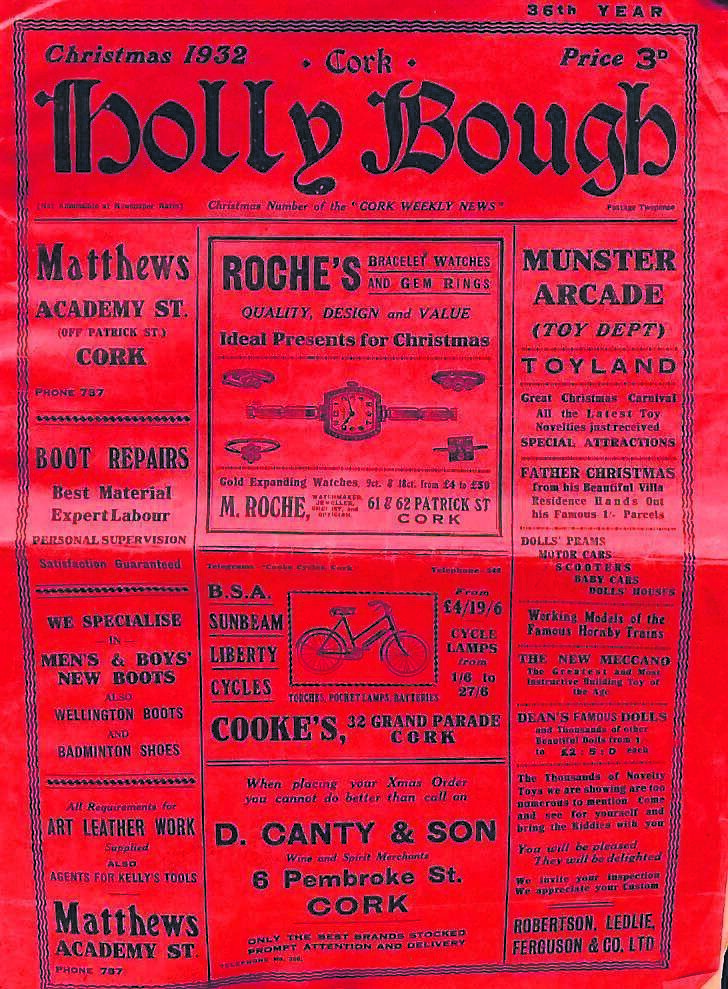
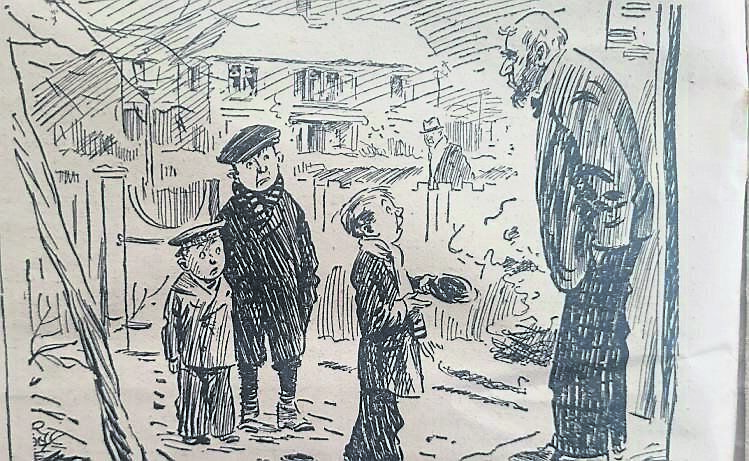
“To politicians, unemployment is a problem; to Hurley, it is a tragedy. He is not content to look on helplessly or utter platitudes to the workless man about a new social order.” Next on the list was Jim Musgrave, whose glittering sporting career was followed by an equally successful career in business In its portrait, the Holly Bough said Musgrave had embarked on a six-month voyage around Cape Horn at the southernmost tip of the Americas on a windjammer “at an age when his schoolfellows were reading sea stories”.
The Corkman won a rowing race at the Cork International Regatta, in 1902, then turned to dry land and took up rugby as a centre.
Musgrave won five Munster Cup medals and would surely have won an Irish cap if he hadn’t been up against the legendary Basil Maclear in that position. Maclear was one of 25 players inducted to the World Rugby Hall of Fame during the 2015 Rugby World Cup. He served with the British Army in Fermoy and died in Ypres during World War I.
Musgrave also excelled at hockey and golf, with the Douglas club, and became President of the IRFU. Musgrave Park was named in his honour.
In 1932, Musgrave was head of the biggest laundry company in the country, at the Metropole, employing 200 workers.
“When the ‘Boss’ walks through the Metropole Laundry, no smiles are petrified,” said the Holly Bough, “no chill invades the air, the groups of girls continue to sing their selections from grand opera. We should hear little of labour unrest if all employers were like Jim Musgrave.” Musgrave, who also ran the Metropole Hotel, died in 1938.
Next on the list was R.S (Dick) Anthony, a politician and trade unionist, who began his working life as a teenage printer on the Echo and Examiner.
He became a Labour TD in 1927, but was ousted from the party for supporting an anti-IRA Government bill that could have sentenced to death without appeal anyone guilty of IRA violence.
Undaunted, Anthony stood as an Independent and won several elections in Cork. He was also Lord Mayor in 1942 and 1943.
The final two men lauded in the 1932 Holly Bough article were Professor Alfred Rahilly and Philip Monahan.
“He is not the bearded, benign, absent-minded professor of the sentimental press as he slowly paces the old College quadrangle,” said the Holly Bough. “He will plunge into a fight with the readiness of Don Quixote, and rake his opponent with a machine gun fire of witty invective. But when the smoke of battle clears away, he feels no malice as he gazes on the mangled body of his adversary.” The tribute to Monahan begins with a description of him as a republican inmate in Lincoln Jail in 1918, where he helped Éamon de Valera escape. He went on to be Ireland’s first local authority manager and was City Commissioner then City Manager in Cork from 1924 to 1959.
The Holly Bough said: “Before his time, the back lanes were filthy, now they are clean and well-surfaced. He has fostered several housing schemes, for one of which he did not hesitate to postpone building the City Hall.
“He is sometimes regarded as a strutting dictator, lusting for power - a picture which is pathetic in its untruth.” The 1932 Holly Bough contained an article recommending various foods in Cork city, such as cakes from Ormond and Ahern’s at 107, Shandon Street; choice teas, turkey, hams, and fruit from A.A Levis, of 96, South Main Street; and Christmas cakes and “bon-bons in fancy boxes” from Gerald D’Arcy, of 5-6, North Main Street.
You could buy margarine and shredded suet from the Shandon Castle Company, special dry cure bacon from Hemsworth’s of 12-15, Cornmarket Street, and dried fruits, icing sugar and “all the sweet things of the season” from Jacobs of 41, Princes Street.
There were recommendations for jewellery, gifts, toys and suits from Montague Burtons, which had no less than three stores on Patrick Street. As for Christmas dinner? “Paddy Flaherty of course! What better?”


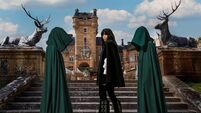



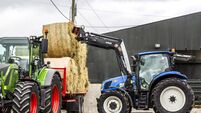
 App?
App?


